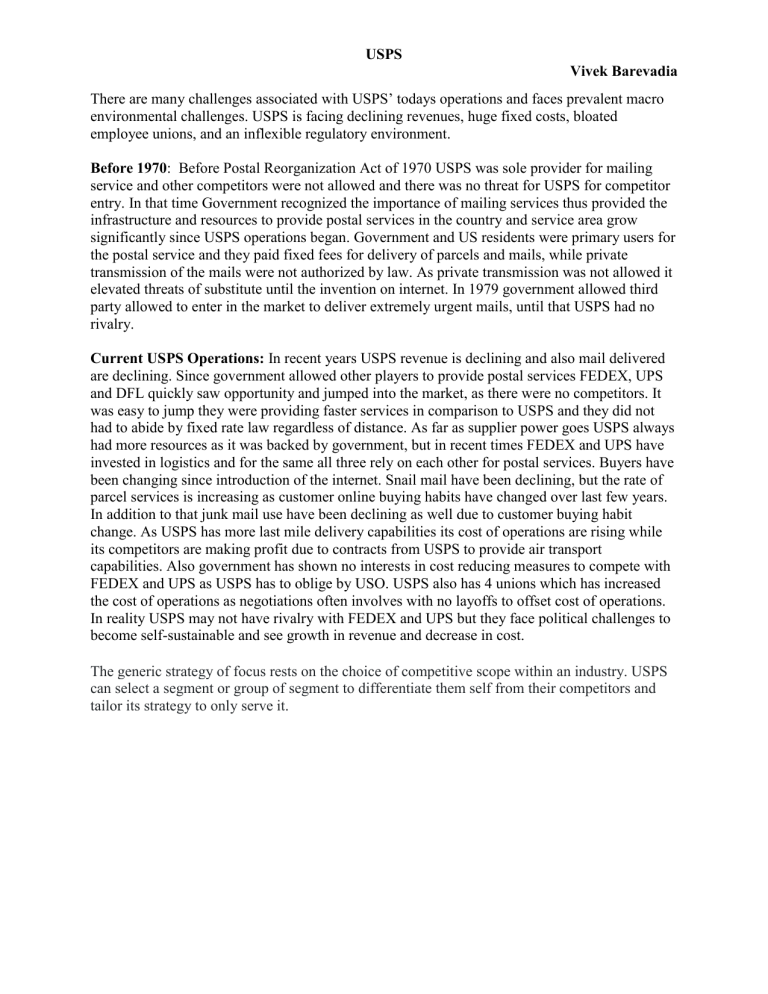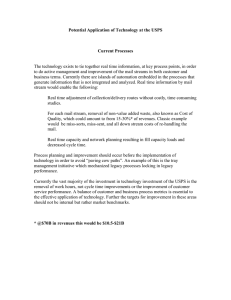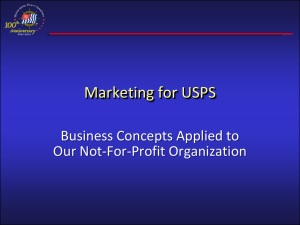
USPS Vivek Barevadia There are many challenges associated with USPS’ todays operations and faces prevalent macro environmental challenges. USPS is facing declining revenues, huge fixed costs, bloated employee unions, and an inflexible regulatory environment. Before 1970: Before Postal Reorganization Act of 1970 USPS was sole provider for mailing service and other competitors were not allowed and there was no threat for USPS for competitor entry. In that time Government recognized the importance of mailing services thus provided the infrastructure and resources to provide postal services in the country and service area grow significantly since USPS operations began. Government and US residents were primary users for the postal service and they paid fixed fees for delivery of parcels and mails, while private transmission of the mails were not authorized by law. As private transmission was not allowed it elevated threats of substitute until the invention on internet. In 1979 government allowed third party allowed to enter in the market to deliver extremely urgent mails, until that USPS had no rivalry. Current USPS Operations: In recent years USPS revenue is declining and also mail delivered are declining. Since government allowed other players to provide postal services FEDEX, UPS and DFL quickly saw opportunity and jumped into the market, as there were no competitors. It was easy to jump they were providing faster services in comparison to USPS and they did not had to abide by fixed rate law regardless of distance. As far as supplier power goes USPS always had more resources as it was backed by government, but in recent times FEDEX and UPS have invested in logistics and for the same all three rely on each other for postal services. Buyers have been changing since introduction of the internet. Snail mail have been declining, but the rate of parcel services is increasing as customer online buying habits have changed over last few years. In addition to that junk mail use have been declining as well due to customer buying habit change. As USPS has more last mile delivery capabilities its cost of operations are rising while its competitors are making profit due to contracts from USPS to provide air transport capabilities. Also government has shown no interests in cost reducing measures to compete with FEDEX and UPS as USPS has to oblige by USO. USPS also has 4 unions which has increased the cost of operations as negotiations often involves with no layoffs to offset cost of operations. In reality USPS may not have rivalry with FEDEX and UPS but they face political challenges to become self-sustainable and see growth in revenue and decrease in cost. The generic strategy of focus rests on the choice of competitive scope within an industry. USPS can select a segment or group of segment to differentiate them self from their competitors and tailor its strategy to only serve it.

